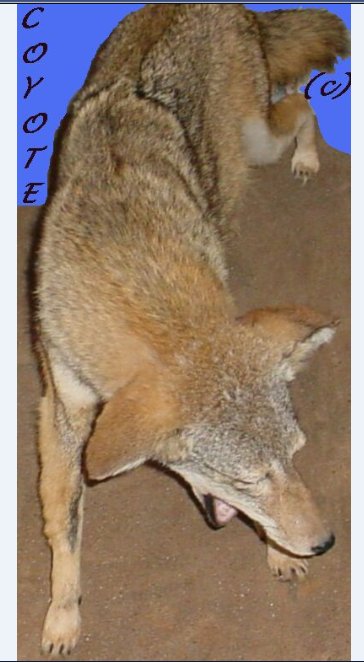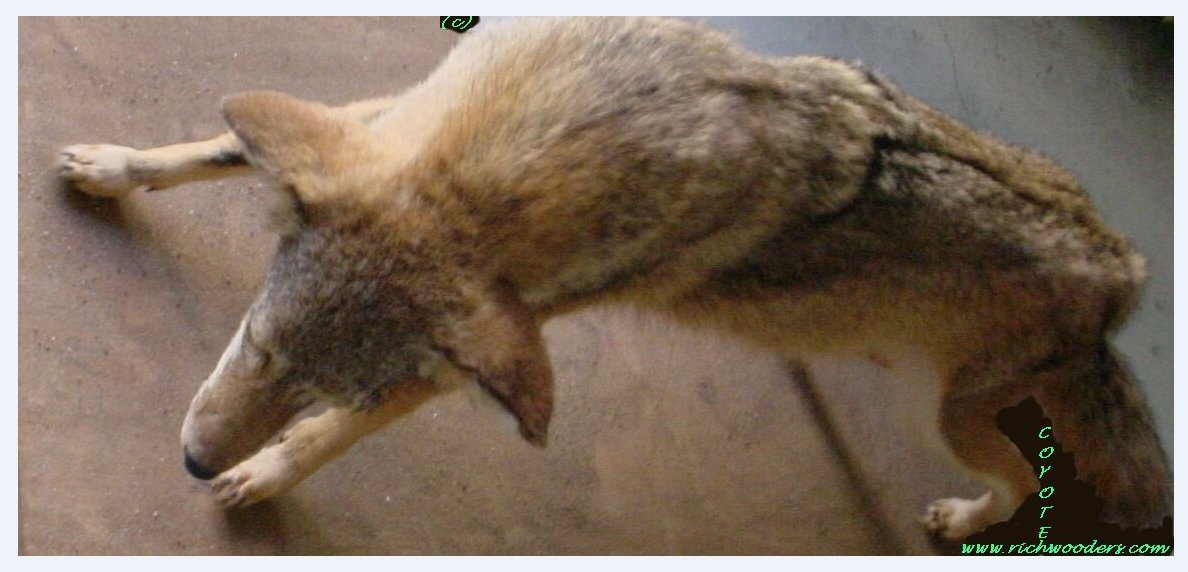Native American coyote Still wild
Coyotes in West Virginia.Coyotes (Canis latrans) are found through most of West Virginia. Coyotes are very adaptable and are steadily expanding their range in the Mountain State. They are medium sized animals belonging to the dog family. Most adults weigh between 22 to 25 pounds on the average, with males typically being larger. With large erect ears, slender muzzle, and bushy tail they resemble a small dog. The color is darker with less brown. In the winter the coats become quite dense. The voice of the coyote is quite distinctive, consisting of various howls, high-pitched yaps, and occasional dog like barks is a ritual enjoyed by West Virginians, many of whom consider these coyote vocalizations reassuring sounds of the wild.. Coyotes are proficient predators, possessing the speed, strength, and endurance necessary to tackle prey as large as adult deer.
The diet of the coyote consists mainly of squirrels, mice, rats, chipmunks, rabbits, and regularly feast on the carcasses of deer and other animals. They also eat insects, amphibians, fruits, reptiles, birds and their eggs, and deer fawns. In some rural areas of West Virginia they prey on sheep, and poultry. In urban and suburban areas, garbage, domestic cats and dogs, and pet food.Coyotes are most active at night and during the early morning and late evening hours. In areas where they are not disturbed by human activities and during the cooler times of the year, they may be active throughout the day. Urban coyotes are becoming very tolerant of human activities. Young coyotes tend to be more active during daylight hours than adults. Home range size varies depending on food availability.Unlike its cousin, the wolf, which no longer is seen in West Virginia, the coyote thrives as human population continues to increase.
Coyotes breed from January to March. Pairs usually do not remain together for life, but they may mate over a period of several years. The five to seven pups are born about 60 days after mating occurs. The newborns arrive blind and hairless. The male works to provide food for his nursing mate.
Their eyes opening within two weeks, the coyote pups are reared in dens, which may be prepared by the mother after being requisitioned from another animal, like foxes . The pups are ready to leave the den at between eight and ten weeks of age. The coyote family remains together until fall, when the youngsters strike out on their own.
Coyotes, sheep and lamb!
Many factors cause economic losses toWest Virginia livestock producers, but predators, especially coyotes, cause significant losses attacking sheep, cattle, and goats. Many West Virginia shepherds who left the sheep business did so because of sheep losses to predators.
TOP
General references:
(1) U.S. Fish and Wildlife Service, USDA and NPS
(2) Photo Credit: Billybob
Web Site Hosted by [ Billybob and www.richwooders.com] 
 |


